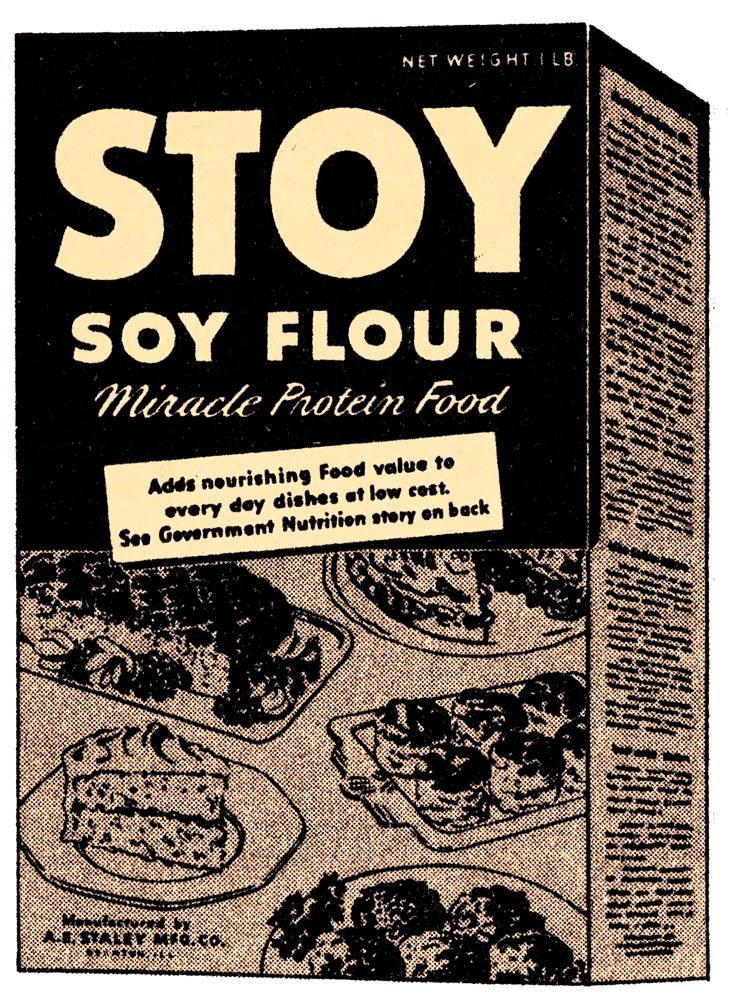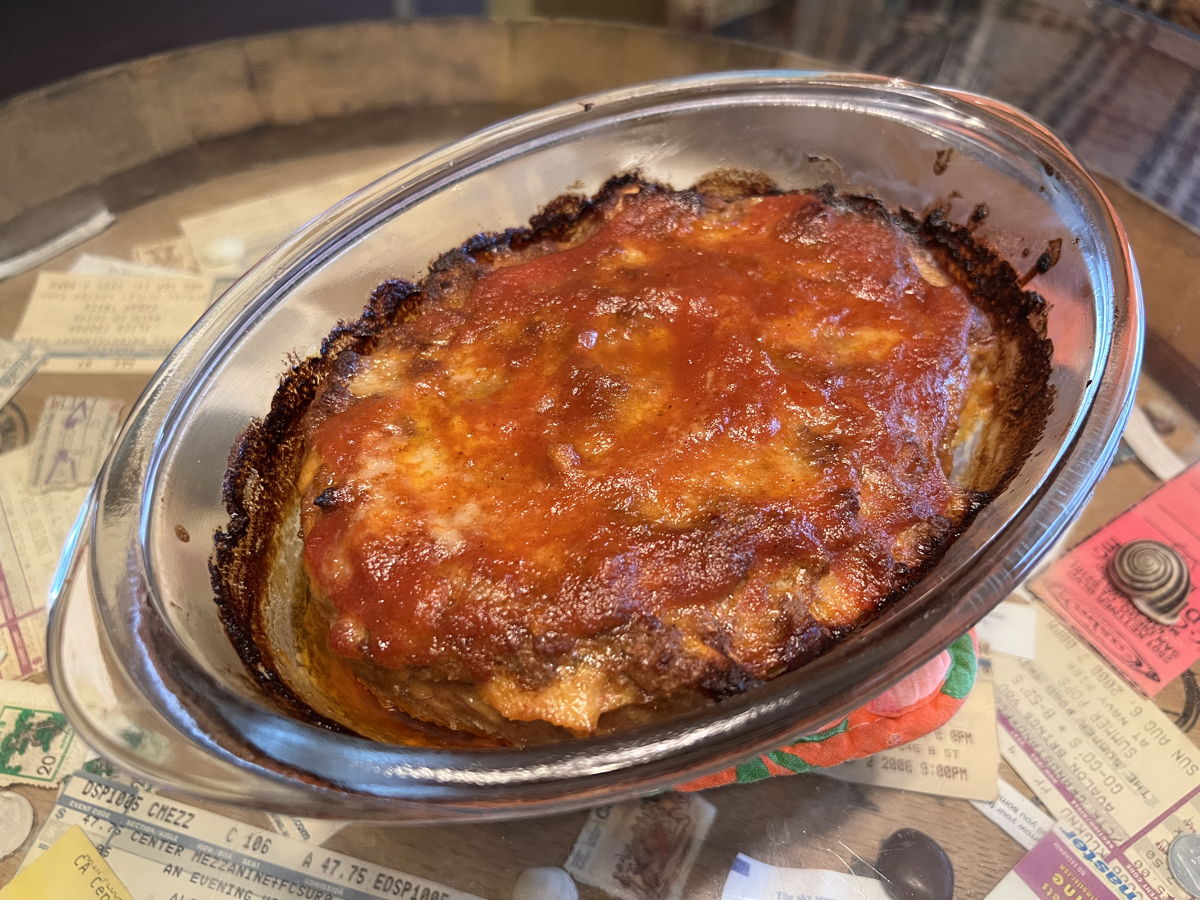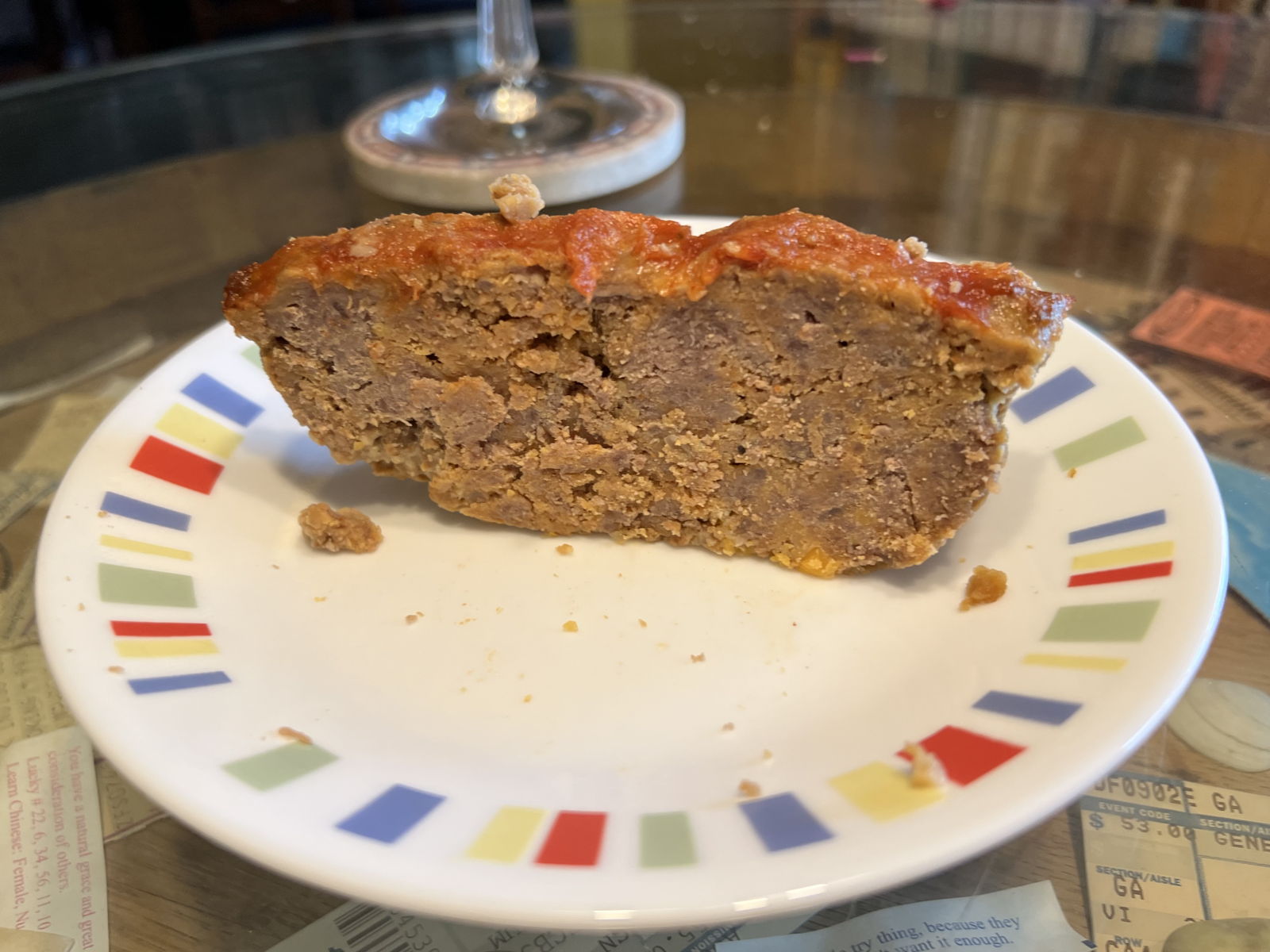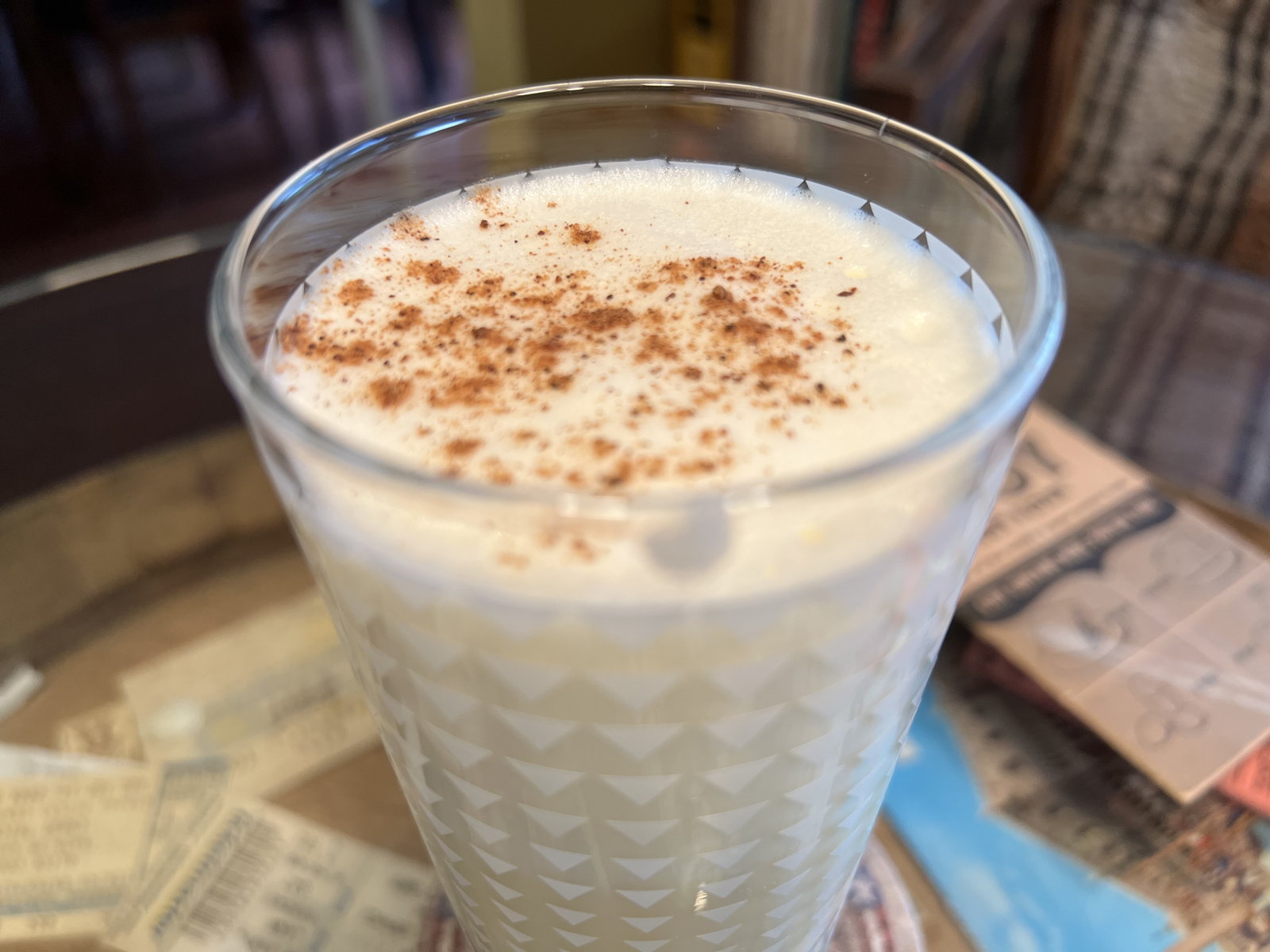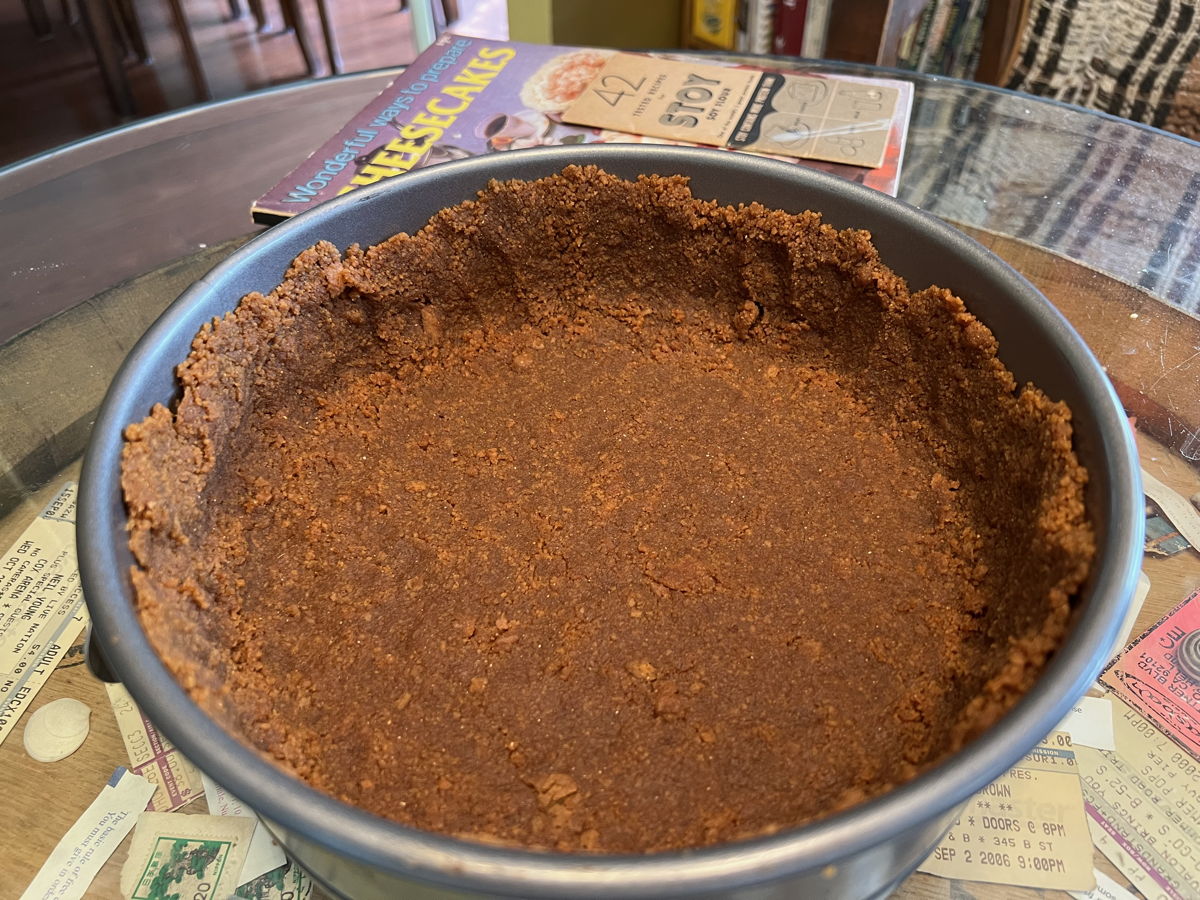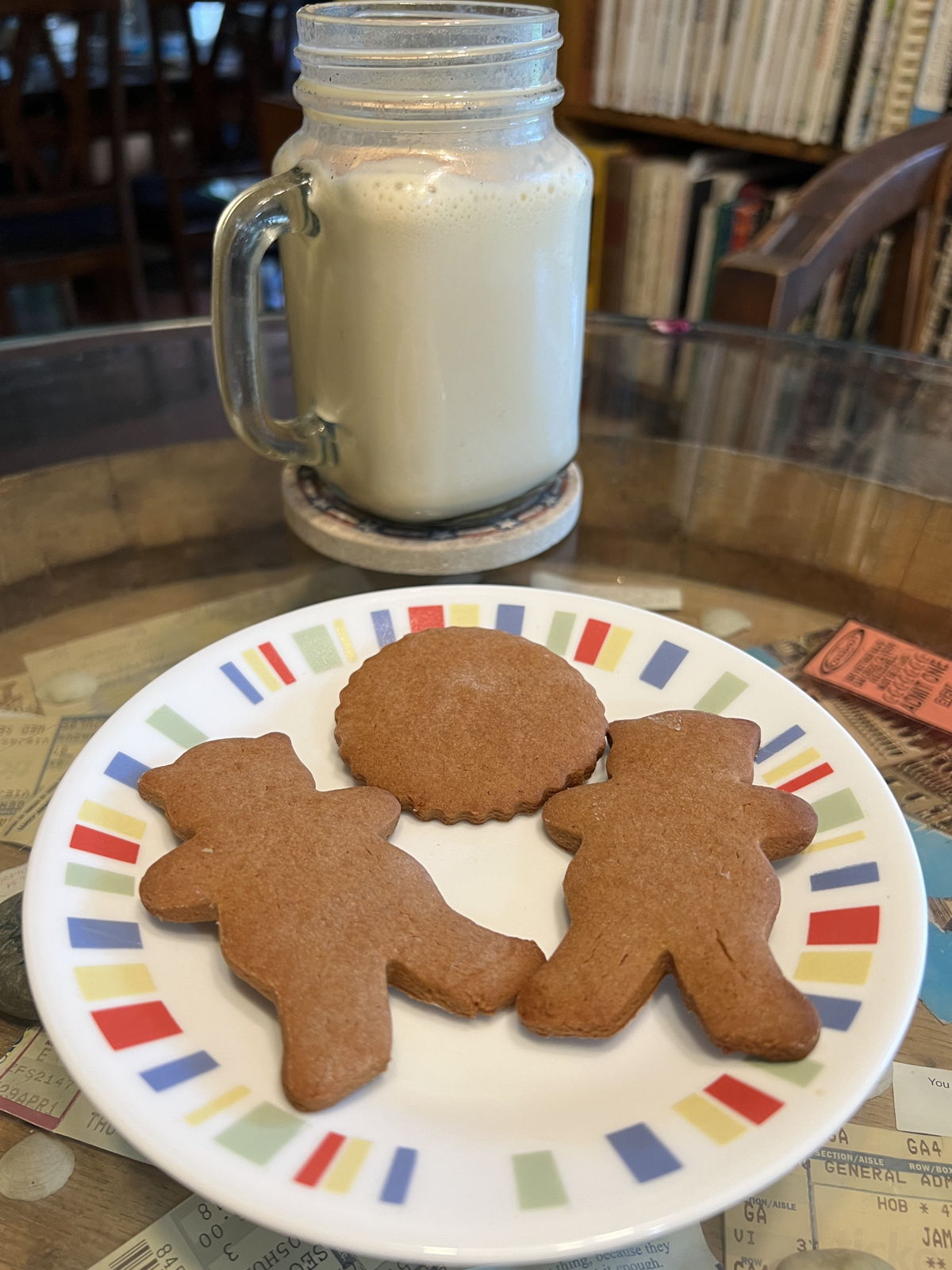Stoy Soy Flour: Miracle Protein for World War II
42 Tested Recipes for Stoy Soy Flour (PDF File, 5.3 MB), from 1943, is different from the alternative grain cookbooks I have from the fifties. Cooking with Wholegrains (1951) and El Molino Best (1953) were part of the whole grain movement among whole grain mills. Stoy Soy Flour appears at first glance to be just another soybean product from A. E. Staley Mfg. Co. But A. E. Staley is not the same kind of mill as El Molino Mills and especially not the the same kind as the Orton’s Vermont Country Store.
As an example of how much Staley differed from whole grains producers, they would later become pioneers in the introduction of high fructose corn syrup to other producers such as Coca-Cola and Pepsi. That’s a far cry from El Molino Mills, who appear to have excised any mention of syrup from their ingredients!
A. E. Staley was a bulk food processor from about 1906 through the late eighties. As far as I can tell, they only marketed soy flour during World War II. If this pamphlet can be used as a guide, they did it specifically to provide a non-rationed protein alternative to meat, milk, eggs, and cheese during World War II.
Soy Flour is one of the world’s five great protein foods. Meat, milk, eggs and cheese are the other four. Wartime needs, due to military and lend-lease requirements, are taking large quantities of these common protein foods. Therefore, STOY is meeting a great need for a new source of protein in the diet.
Staley left the soy flour business after the war ended. It remained popular in the whole grains movement well into the 21st century but today even specialty flour companies such as Bob’s Red Mill have stopped making it. Soy flour is often one of the many legume-based flours available from Indian grocers. That’s where I get it.
A. E. Staley’s unstated but implied focus on only temporarily replacing other protein sources means that many of these recipes don’t really benefit, flavor-wise, from the use of soy flour. While two do mention an added “nut-like soy flavor”, most are purely about either reducing the use of protein foods elsewhere in the family’s diet, or cutting back on wheat flour, another in-demand food item for the troops.
This book, in other words, was about freeing up wheat and meat for the war effort by convincing consumers to replace them with soy flour. Its appearance in 1943 was specifically the result of a government push for reducing wheat use:
During World War II, the USA had a major campaign to reduce use of wheat flour. Soy flour—if used in the right proportions—could help to yield delicious, protein-rich products.
The best of the recipes I tried substituted for both eggs and wheat: the Stoy Crispy-Crust Meat Loaf replaced one of the eggs and all of the bread crumbs with soy flour. This meant a smoother textured meat loaf than normal; the recipe itself was a superior recipe, too, probably due to the inclusion of chili sauce, for which I used Sriracha.
There’s also a Victory Jam Cake that reduces the use of wheat. I think it also reduces the use of eggs, as it uses only three eggs for two layers of a 9-inch layer cake. This is the only recipe with a title that calls out a war focus to these recipes. Most of the recipes have Stoy in the title, not Victory or Liberty or any of the other keywords to wartime rationing.
The inside back cover has a quote from the United States Department of Agriculture under “What Government Authorities Say:”
Special committees in the Department are now developing a program for the utilization of soy products—both in kitchen recipes and in prepared foodstuffs—to take full advantage of this important protein food in the American diet. Soy products already have played a significant wartime role. Rich in valuable protein, minerals and vitamins, they are readily adaptable to large scale use as a human food to supplement meat, milk, and eggs.
The reason there’s not much in the way of advertisements like this for soy flour after the forties is that nobody wanted it.
The war ended with a glut of soy flour in America. After the government's insistence that lots of soy flour be produced in a hurry, much was actually over-produced. A great deal of the tonnage sent abroad to countries such as France and Greece was apparently not accepted. Forrestal (1982) reported that the A.E. Staley warehouse in Ohio had mountains of soy flour that nobody seemed to want; eventually it became weevily and was fed to cattle.
I can understand the lack of enthusiasm. None of these recipes seem to benefit specifically from any soy flavor. The best of them, the meat loaf, benefits from a smoother texture, but this is probably achievable with any non-gluten flour, such as rice flour. In fact, it would probably be very good with brown rice flour instead of soy flour, although not likely as nutritious. I expect chickpea or almond flour would also work very well—maybe even potato flour.
I fully intend to keep their meat loaf in my rotation—but I’m not going to be scrupulous about using soy flour as the filler.
I’m going to guess that this cookbook wasn’t meant to provide killer recipes that would sell the public on soy flour. It was meant to reduce reliance on eggs, dairy, meat, and wheat until the war was over. The Stoy Old-Fashioned Molasses Cookies are perfectly passable. They, also, replaced about one egg as well as some of the flour with soy flour. They were fine cookies, but there was nothing special about them.
If there were a war on and real molasses cookies were unavailable, I would have no problem eating these as a substitute. I expect they would have been better with another egg. While I’m not going to make this recipe again, I did freeze most of them and I used them for a cookie-crumb crust for a ginger-rum cheesecake. They made the perfect crust to counterpoint the very sweet cheesecake.
Staley Mfg. Co. continued to process soy after the war, but if I’m reading this history correctly, only for use in other products, not for marketing directly to consumers.
One of the things that struck me browsing through this pamphlet is that none of the pies contain soy flour. The only soy in them is if you use this cookbook’s recipe for pastry or pie crust. This is common for baking powder cookbooks, too: they include pies that only use the advertised product in the sense that they use it in the pie crust. Presumably, companies hoped that by including pie recipes the consumer would use the crust from the facing page!
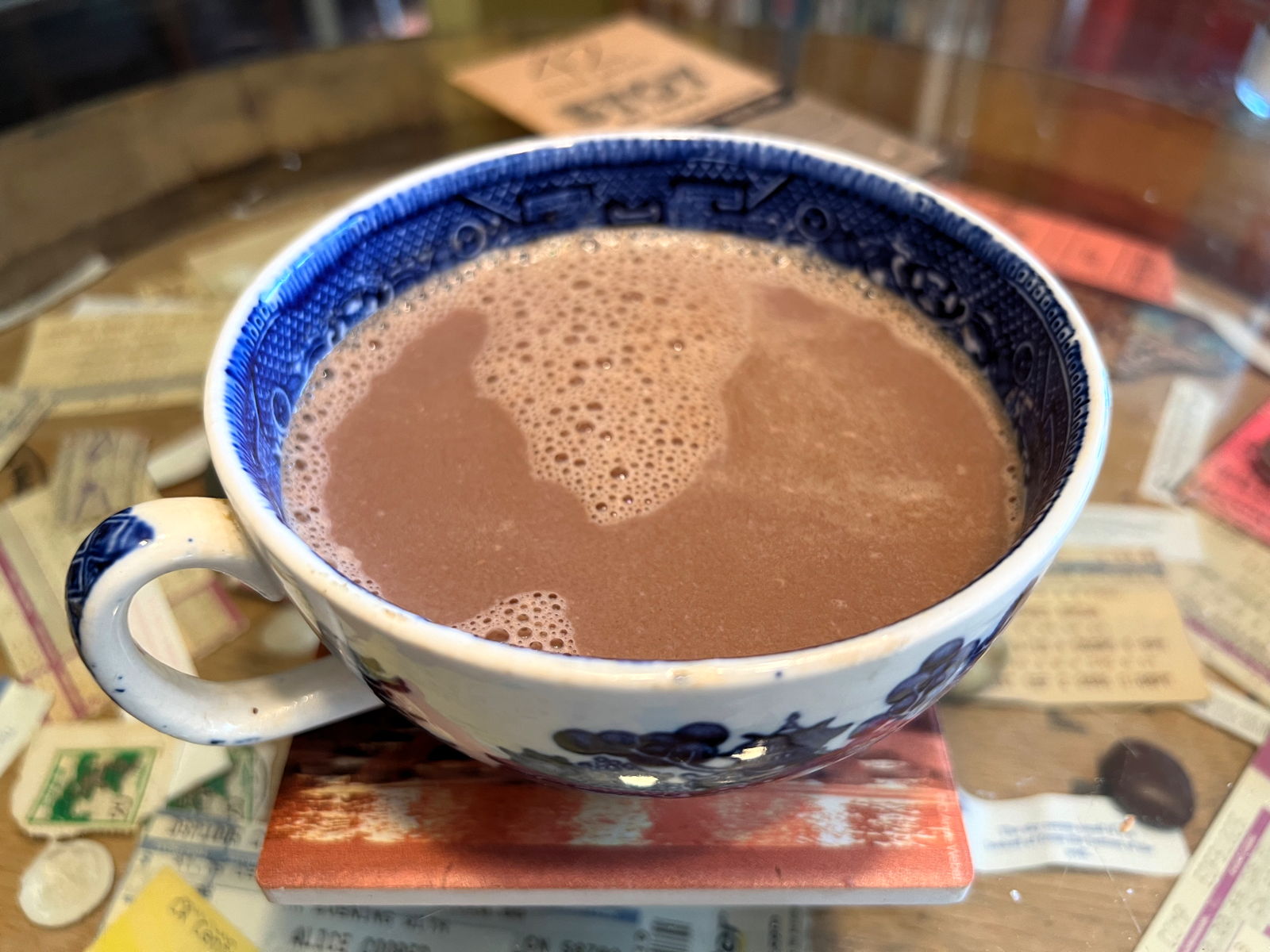
This is not wartime privation. This is good.
Not surprising, I suppose. Pies are awesome and everyone wants to take credit for them. I only celebrate three food holidays on this blog, and one is Pi Day. And in their defense, the Stoy pastry and the Stoy pie crust use a lot more soy flour than, say, the Horsford Cook-Book pie crusts use baking powder or baking soda!
The beverages were the reason I bought the book. I’ve recently gotten into making easy egg nog recipes and the Stoy Egg Nog looked interesting. It turns out to be the recipe that most benefited from soy flour specifically. The “nutty flavor” did indeed come through and was enhanced by the vanilla and the sugar.
The Stoy Cocoa De Luxe was just as good, if not better. It’s a very rich hot cocoa—perfect for fall and winter weather!—thickened with corn starch and fortified with soy flour. It was good enough that I’m considering making a jar of all five dry ingredients so that I can make it at a moment’s notice by just microwaving some milk and boiling some water. This is purely a case of using soy to add protein. The flavor does not come out, because the teaspoons of soy flour are overridden by the tablespoons of cocoa. It’s possible that the soy flour helps to thicken it a bit, but I’m guessing that corn starch is so much more powerful than bean flour at thickening that the addition is minimal if it even exists.
I can’t emphasize this too much: it’s one of the best hot cocoas I’ve had.
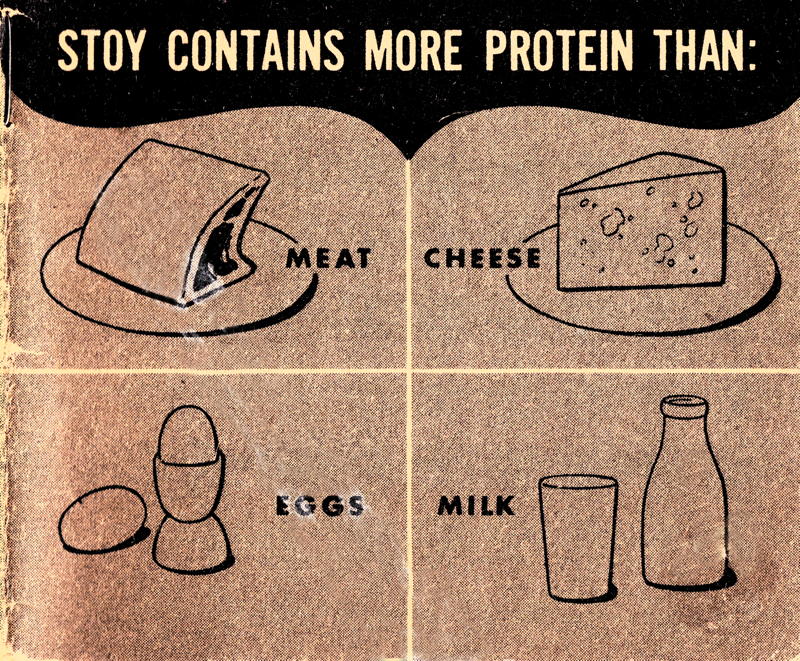
But does it contain more flavor?
The Stoy Molasses Milk Drink was less interesting. It’s basically milk mixed with molasses, with a bit of soy flour added instead of, rather than in addition to, an egg. Mixing molasses into the milk diluted the milk flavor, and mixing milk into the molasses diluted the molasses flavor. The molasses overpowered any “nut-like soy flavor” that might have been imparted by soy flour.
As with the cookies, there was nothing particularly wrong with this drink, but absent a protein shortage I’d be unlikely to make it for its own sake.
The first time I heard about soy flour was in Beatrice Trum Hunter’s Whole Grain Baking Sampler. It caught my eye because it was one of the lesser ingredients in Cornell Bread. Hunter called the addition of wheat germ, soy flour, and milk powder the “Triple Rich Cornell Formula” and she incorporated it into many of her bread recipes. As she defined it, the Cornell Mix is simple:
…for each cup of flour, first place in the measuring cup 1 tablespoon of soy flour, 1 tablespoon of nonfat dry milk powder, and 1 teaspoon of wheat germ. Then fill the remainder of the cup with unbleached flour.
Hunter’s soy flour cookies are interesting, in that while they do contain wheat, it’s only in the form of wheat germ. The flour is only soy flour. They are, to my taste, much better than the molasses cookies from Staley Manufacturing. They are both chewier and more flavorful.
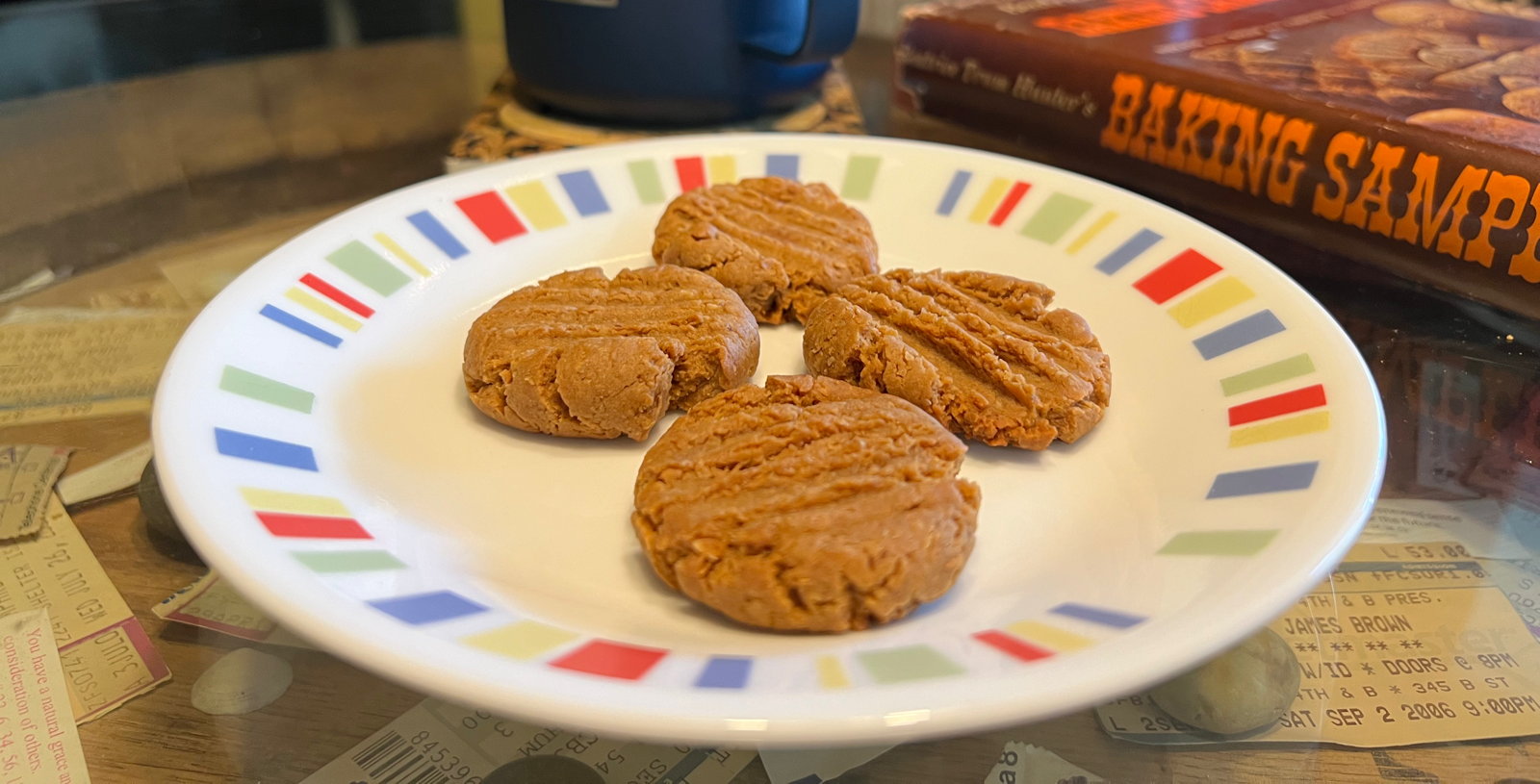
Soy Molasses Cookies
Servings: 30
Preparation Time: 30 minutes
Beatrice Trum Hunter
Beatrice Trum Hunter’s Whole-Grain Baking Sampler (Internet Archive)
Ingredients
- ½ cup sorghum molasses
- ½ cup vegetable oil
- 1 egg
- 1 cup soy flour
- ½ cup wheat germ
- ginger or other spices if desired.
Steps
- Blend ingredients together in order.
- Drop by teaspoons onto a greased cookie sheet.
- Flatten with a sugared glass.
- Bake at 350° for 12-15 minutes, or until browned at the edges.
I’m not sure, but I think there are either typos in Hunter’s original, or the ingredients she used were significantly different than the ones I used. Her recipe did not call for flattening the cookies but simply spacing them to allow spread. She specifically notes that her recipe makes a very thin batter. With those ingredients, however, I did not get a thin batter at all. Left as dropped from the teaspoon, they did not spread. They had to be flattened. It’s possible that the flour I used was finer than the flour she used, or that sorghum molasses is thicker than unsulfured molasses; it’s also possible that it’s missing some other ingredient, such as milk.
And of course it’s also possible that she used an older style of instruction, and that “2 cups soy flour” really means “up to 2 cups soy flour”. I might try it that way next time, going for a thinner batter, and I might also try adding some ginger or other spices commonly used in molasses cookies.
Because it’s a thicker batter, I upped the temperature to 350°. Her recipe called for only 300°, which likely would be fine if it was a thin enough batter to spread on its own. I had to bake mine for about 20 minutes to get them to brown slightly.
I’m including a recipe from the Whole Grain Baking Sampler because, as usual, a recipe from the book I’m providing a PDF for would be superfluous—I haven’t modified the Stoy recipes in this pamphlet in any significant way, unless you include using Sriracha as the chili sauce for the meat loaf.
Also, I never miss an opportunity to plug Hunter’s book. She writes from a very different perspective from both 42 Tested Recipes (PDF File, 5.3 MB) and the later vegetarian movement both of which, oddly, had the same purpose: to provide substitutes for meat in order to convince everyone else to join their respective wars.
Hunter just thought it was healthier to eat a variety of foods and to eat the whole food; her Natural Foods Cookbook did the same for the rest of the table that her baking sampler did for baked goods. It includes an entire chapter on parts of the animal “usually relegated to the position of miscellaneous items”. That means pages and pages of recipes for liver, kidney, tripe, sweetbreads, brains, heart, tongue, and lungs.
When she says whole foods, she includes the whole animal!
For those who have never savored the goodness of whole foods, there is a pleasant discovery in store.
42 Tested Recipes for Stoy Soy Flour (PDF File, 5.3 MB) is a pleasant discovery, too, despite the pedestrian nature of the recipes. That was very likely its entire point: provide recipes that replaced existing ones which relied too much on meat-based proteins and wheat flours.
I don’t have much in the way of wartime cookbooks. The only other post-1941 cookbook I have, Cold Cooking, was probably written before December 7. The next cookbook in my collection is the 1946 Joy of Cooking which had already jettisoned the wartime content of its otherwise close-to-identical predecessor.
Staley’s 42 Tested Recipes, on the other hand, was a product of the war and lasted only to the war’s end. It’s a unique relic of war-time cooking—or at least of war-time propaganda. As Veterans Day approaches, you might consider trying a few of these wartime rationing recipes (PDF File, 5.3 MB). If you do decide to use soy flour and want more recipes for it, there are a lot of soy flour recipes in El Molino Best and in Beatrice Trum Hunter’s Whole Grain Baking Sampler. And of course there’s the classic Cornell Bread, also available in Hunter’s book.
In response to Vintage Cookbooks and Recipes: I have a couple of vintage cookbooks queued up to go online.
- 42 Tested Recipes for Stoy Soy Flour (PDF File, 5.3 MB)
- “STOY contains more protein than meat, cheese, eggs, or milk… Wartime needs, due to military and lend-lease requirements, are taking large quantities of these common protein foods. Therefore, STOY is meeting a great need for a new source of protein in the diet.”
- Beatrice Trum Hunter’s Whole-Grain Baking Sampler: Beatrice Trum Hunter at Internet Archive
- “More than 250 natural-ingredient recipes for breads, rolls, cookies and confections—for creative baking and healthful eating.”
- A Centennial Meal for the Sestercentennial
- How did Americans in 1876 celebrate the centennial culinarily? Some of their recipes are surprisingly modern, and some are unique flavors worthy of resurrecting.
- Classic ‘Cornell Bread’ Is Still a Favorite of Health-Conscious Bakers: Beth Saulnier at Cornell Alumni, Parents, and Families
- “Since the 1940s, Professor Clive McCay’s recipe has been a nutritious alternative to the typical white stuff.”
- Cooking with Wholegrains: Mildred Ellen Orton and Vrest Orton at Internet Archive (ebook)
- A 1951 whole-grain cookbook from Vermont.
- Eggnog for Breakfast… and Beyond!
- I enjoy breakfast beverages, and eggnog—egg and milk or cream with flavoring—is a perfectly balanced breakfast. Drink Your Breakfast!
- El Molino Best: Whole grains in 1953
- El Molino Mills of Alhambra, California, published a fascinating whole grain cookbook in 1953.
- History of Soy Flour, Grits, Flakes, and Cereal-Soy Blends—Part 4: William Shurtleff and Akiko Aoyagi at Soy Info Center
- “The 1940s and World War II. The pioneering research and development work done on soy flour done during the previous 2 decades came to fruition in the 1940s, when soy flour first came to be widely available in America, just as it had in Europe. The shortages of food and animal protein brought on by World War II stimulated strong interest in soy flour as a widely available alternative source of low-cost, high-quality protein.”
- History of the A.E. Staley Manufacturing Co. Work with Soy: William Shurtleff and Akiko Aoyagi at Soy Info Center
- “Staley overcame countless obstacles and became the largest, and for a long time the oldest, soybean crusher in the United States.”
- The Natural Foods Cookbook: Beatrice Trum Hunter at Internet Archive
- “The first book of Natural Foods recipes that shows you a new way to more flavorsome easy-to-make meals, more radiant health and greater day-by-day energy for the whole family.”
- Refrigerator Revolution Revisited: 1942 Cold Cooking
- Iceless refrigeration had come a long way in the fourteen years since Frigidaire Recipes. And so had gelatin!
More baking
- Quiet ovens and Australian rice shortbread
- What is a quiet oven? How do we translate old recipes? Executive summary: 325°; very carefully. Plus, two Australian recipes for rice shortbread as a test of my theory.
- El Molino Best: Whole grains in 1953
- El Molino Mills of Alhambra, California, published a fascinating whole grain cookbook in 1953.
- Club recipe archive
- Every Sunday, the Padgett Sunday Supper Club features one special recipe. These are the recipes that have been featured on past Sundays.
- Three from the Baker’s Dozen
- Three recipes from a Baker’s Coconut pamphlet once included in McCall’s magazine: coconut squares, chocolate cheesecake, and broiled coconut topping.
- Padgett Sunday Supper Club
- Dedicated to the preservation of vintage recipes.
More cookbooks
- Cookbook publication year estimates I have made
- When I acquire a cookbook without a publication or copyright year, I use the advertisements and contributors to make a stab at the likely year of publication. This page provides those guesses in case it helps you date your own books.
- Refrigerator Revolution Revisited: 1937 Kitchen-Proved
- Refrigerators started to take off during Prohibition, and became ubiquitous following World War II. This Westinghouse refrigerator manual and cookbook gives us a glimpse at home refrigerator/freezers in the Great Depression.
- Four New Ices and an Ice Cream Cookery
- Philadelphia Ice Cream, Walnut Nougat, Lemon Cream Sherbet, and Cranberry Ice. Four more new no-churn ice creams and desserts for Summer 2025. And, a book collecting all my favorite no-churn ice creams if you’re interested!
- My Year in Food: 2024
- From Italy, to San Diego, to Michigan, and many points in between; and from 1876 up to 2024 with stops in the 1920s, this has been a great food year.
- Mrs. Winslow’s Domestic Receipt Book for 1876
- If this is what people were eating in 1876, they were eating very well. From coconut pie to molasses gingerbread to tomato jam, these are great recipes—albeit requiring some serious interpretation.
- 72 more pages with the topic cookbooks, and other related pages
More food history
- Using search engines to guess cookbook years
- Many cookbooks, especially community cookbooks and often advertising pamphlets, leave off the year. Often, however, there are solid clues in the text that narrow down when the book was published, through simple online searches.
- Cookbook publication year estimates I have made
- When I acquire a cookbook without a publication or copyright year, I use the advertisements and contributors to make a stab at the likely year of publication. This page provides those guesses in case it helps you date your own books.
- Refrigerator Revolution Revisited: 1937 Kitchen-Proved
- Refrigerators started to take off during Prohibition, and became ubiquitous following World War II. This Westinghouse refrigerator manual and cookbook gives us a glimpse at home refrigerator/freezers in the Great Depression.
- A Vicennial Meal for the Sestercentennial
- In 1776 we were too busy to write commemorative cookbooks. But in 1796 “Amelia Simmons, American Orphan” published the first known American cookbook. It’s a celebration of American foods, American values, and American economies.
- Mom’s High School Cooking Notebook, 1960
- My mother kept her high school recipe notebook for as long as I can remember. It was often on the kitchen counter when the counter was dusted with flour.
- 23 more pages with the topic food history, and other related pages
More forties
- Refrigerator Revolution Revisited: 1947 Cold Cookery
- The 1947 Norge Cold Cookery and Recipe Digest reflects not just increased access to electricity but also the end of a second world war.
- Refrigerator Revolution Revisited: 1942 Cold Cooking
- Iceless refrigeration had come a long way in the fourteen years since Frigidaire Recipes. And so had gelatin!
More rationing
- Rationing hits the San Diego Comic Convention
- Rationing is almost never the choice, unless you want to create a subculture that thrives on dealing with the rationing scheme. Rationing is trying to force the same amount of water through a smaller and smaller pipe. It’s going to start leaking and finding ways around the pipe.
More World War II
- Iron Sky
- Iron Sky’s fatal flaw is that, ultimately, we were the villain in World War II, not the Nazis.
- Babies Satisfactorily Born
- Odd legends surround the Manhattan Project. Some of them might even be true.
- Washington Goes to War
- The Washington Metropolitan area’s population increased by over 50% between 1930 and 1941. Another 70,000 arrived in 1942, and 5,000 new federal workers were added every month. The reason was war, and the rumor of war. The book covers the period from 1939 to 1945, with much wandering in between. Part of it is from Brinkley’s personal memories of the period, and much more from interviews.

